When you are looking for a new watch, you may be wondering what the difference is between waterproof and water-resistant watches. Many people use these terms interchangeably, but there is a big distinction between the two! In this article, we will discuss the differences between them, as well as provide some tips.
Water Resistant vs. Waterproof: What Is A Waterproof Watch?
W/resistant watches, on the other hand, are not designed to withstand water pressure. W/resistant watches are typically only tested to resist splashes of water or brief dunking in water. Water resistance is measured in ATM (atmospheres) or meters. Watches that are labeled as “water resistant” will have an ATM or meter value on the dial or case back.
The W/proof watches can handle water pressure and should not have any issues if submerged in water. W/resistant watches are not designed to withstand water pressure and should not be submerged in water. [1]
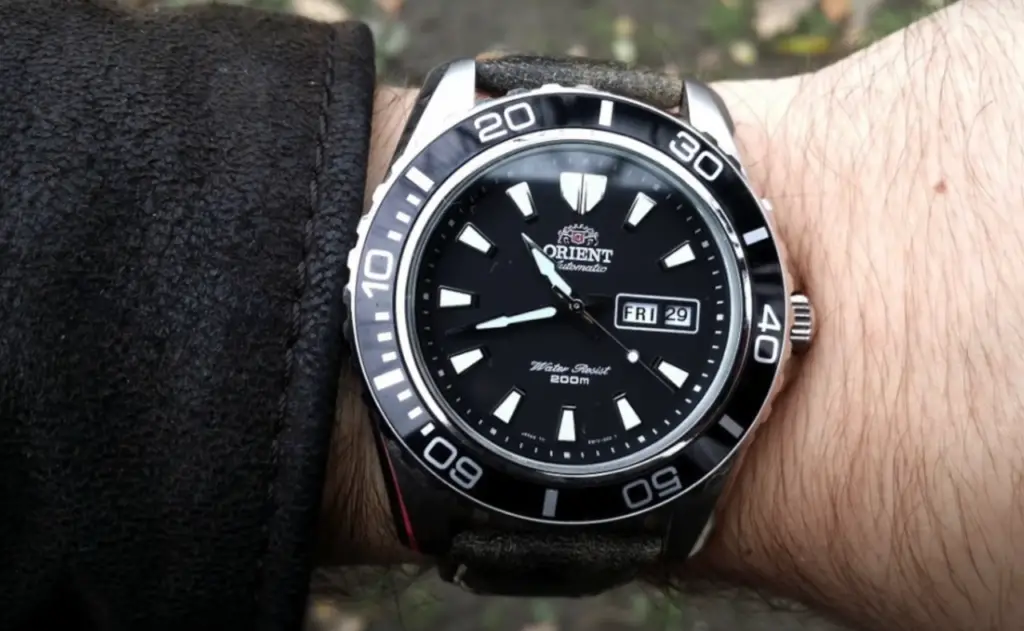
Is Water-Resistant The Same As Waterproof Watches?
The quick answer is no. They are not the same. W/resistant watches can withstand some water exposure, but not all. Waterproof watches, on the other hand, can handle complete submersion in water without issue.
Now, let’s take a more in-depth look at each type of watch and what they can truly withstand. After reading this guide, you’ll know exactly which type of watch is best for your needs – whether that’s swimming, fishing, or just everyday wear in the rain.
Water-Resistant Watches: The Basics
As we mentioned before, w/resistant watches can handle some exposure to water – but not all. The level of resistance is measured in “atmospheres” or “ATMs”. Most w/resistant watches have a level of between three and nine ATMs.
To give you an idea of what that actually means in terms of depth and time, here are some general guidelines:
- A watch with a level of three ATM can withstand splashes of water or brief immersion in water (think washing your hands). It is not, however, built to be worn during activities like swimming;
- A watch with a level of six ATM can be worn while swimming in shallow water for short periods of time. It is not, however, suitable for diving or other activities where it will be exposed to more significant amounts of water pressure;
- A watch with a level of nine ATM can withstand more significant water pressure;
Keep in mind that these are general guidelines – each watch is different and you should always consult the manufacturer’s instructions to see what the specific watch you’re interested in can handle.
Waterproof Watches: The Basics
Unlike w/resistant watches, waterproof watches can be completely submerged in water without issue. They are also measured in “atmospheres” or “ATMs,” but the levels are much higher – most waterproof watches have a level of at least 20 ATMs.
Here are some general guidelines for what that means in terms of depth and time:
- A watch with a level of 20 ATM can be worn while swimming in depths up to 200 meters. It is also suitable for activities like surfing, diving, and waterskiing;
- A watch with a level of 30 ATM – in depths up to 300 meters. It is also suitable for activities like deep-sea diving;
- A watch with a level of 50 ATM – in depths up to 500 meters. It is suitable for deep-sea diving and Endurance racing;
Key Differences Between Waterproof and Water-Resistant Watches
There are a few key differences that you should be aware of before making a purchase:
- Waterproof watches are designed to withstand complete submersion in water, while w/resistant watches are not. This means that waterproof watches are typically much better suited for activities like swimming, diving, and waterskiing than their water-resistant counterparts;
- Waterproof watches typically have higher levels of water resistance. This means that they can withstand more water pressure and be worn in deeper depths of water;
- Waterproof watches are typically more expensive. This is because they are designed to withstand more extreme conditions and are made with higher-quality materials [2];
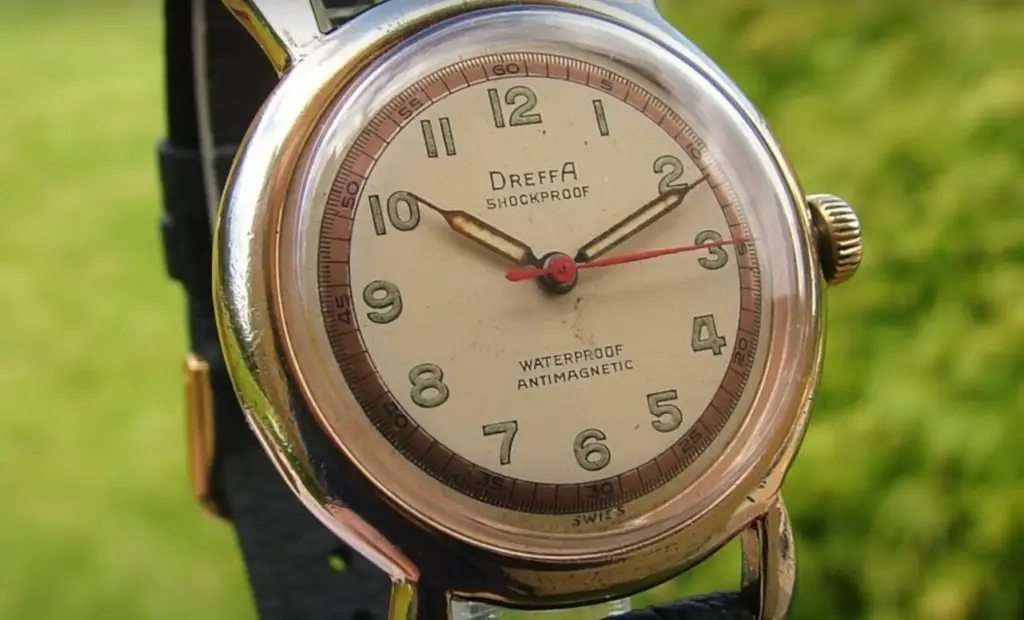
How Does the Weather Affect Water Resistance Watches?
The general rule of thumb is that if the watch is going to be exposed to water, it’s best to err on the side of caution and get a watch with a higher water resistance rating. That way, you can rest assured knowing that your watch will be safe no matter what activities you end up doing.
What Is Water Resistance?
Water resistance is a common feature in watches, but what does it really mean? The watch’s resistance to water is measured by how well it keeps water out of the case. The water resistance level is measured in ATM (atmospheres), and the higher the ATM number, the greater the w/resistance.
Most watches are only splash-resistant. Watches with a w/resistance rating of 50 m or more can be worn while swimming in shallow water. However, even if a watch has a high water-resistant rating, it may not be suitable for all activities. For example, diving watches have special features that make them resistant to the pressures of deep water.
Can I Swim with a Water-Resistant Watch?
The next question people usually ask is whether they can swim with a w/resistant watch. The simple answer is: it depends. If your watch is only rated as w/resistant, then it’s not advisable to go swimming with it. W/resistance ratings are based on tests done in static or still water, so they don’t take into account the pressures exerted on a watch when you’re moving through water. This means that even a small amount of movement can cause water to seep into your watch, damaging it beyond repair.
However, if your watch is waterproof, then you can swim with it without any worries. Waterproof watches have been tested in both static and dynamic conditions, so they can withstand the pressures exerted on them when you’re moving through water. In addition, waterproof watches have a sealant that prevents water from seeping in, even if the watch is slightly damaged.
How Are Water-Resistant Watches Rated?
Most manufacturers have standardized ATMs as the primary way of measuring water resistance.
For example, a watch with a rating of 50m is generally more resistant than one rated 30m. However, there are important exceptions to this rule. For instance, a dive watch with a 200m rating will usually have stronger construction overall than a basic sports watch with the same rating. This is because dive watches are designed to withstand the much greater water pressure found at depth.
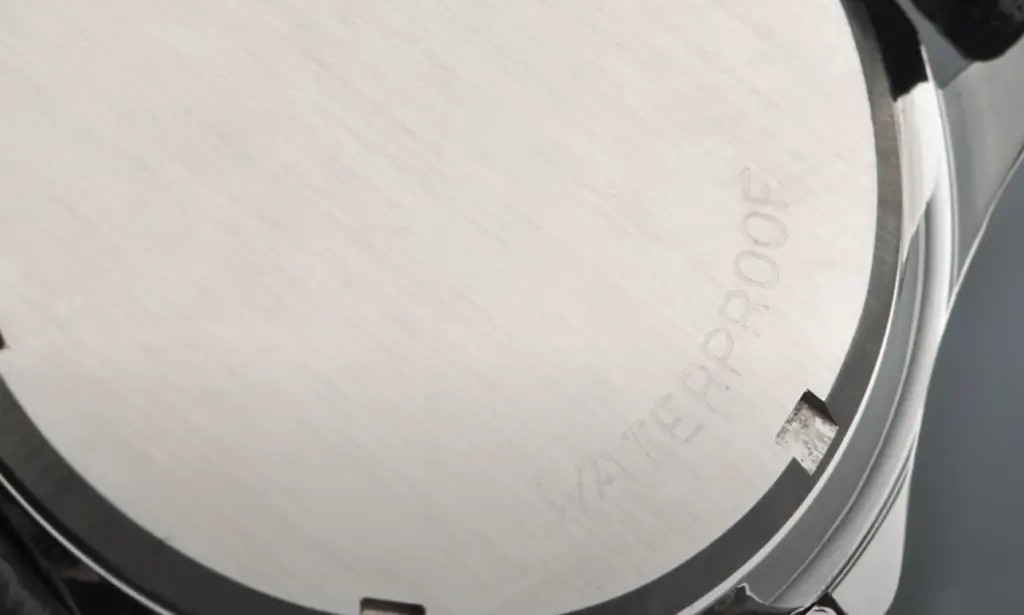
It’s important to consider both the rating and the intended use. A watch with a 50m rating is fine for everyday wear, but it’s not going to be suitable for swimming or diving. On the other hand, a watch rated 200m will be more than adequate for most water activities. [3]
Watch Water Resistance Ratings
This is usually expressed in terms of ATM (atmospheres) or meters. The most common ratings you’ll see are below.
Water-Resistant To 30 m or 3 Bar/ATM
This means that the watch can withstand pressures equivalent to a depth of 30 m underwater. This is a measurement of pressure, not depth. So, a watch with this rating can handle occasional splashes of water or rain, but it’s not meant for swimming or diving.
Water-Resistant To 50 m or 5 Bar/ATM
This rating indicates whether a watch can survive pressures equivalent to a depth of 50 m underwater. This is the minimum rating for watches that are meant for swimming and diving.
Keep in mind that these ratings are for freshwater only. If you’re planning on swimming or diving in salt water, you’ll need a watch with a higher rating.
Water resistance is achieved through a combination of gaskets and seals that keep water out of the watch case, as well as special coatings on the crystal that help repel water. These features all add to the cost of manufacturing a watch, so you’ll usually find that waterproof watches are more expensive than their w/resistant counterparts.
Water-resistant to 100 m or 10 Bar/ATM
This is the most common rating you’ll find on sports and dive watches. This is plenty of protection for most recreational swimming and diving activities.
This means that the watch has all of the characteristics we listed above, as well as some more features such as a unidirectional bezel to assist divers to keep track of their dive time.
Water-Resistant To 200 m or 20 Bar/ATM
This is the rating you’ll find on professional dive watches. Watches with this rating will have all of the features we mentioned above, plus some additional ones like a helium escape valve that allows gas to escape from the watch case during extended periods at depth.
Water-Resistant To 300 m or 30 Bar/ATM
This is the highest rating you’ll find on a watch. Watches with this rating are designed for saturation diving, which is a type of diving where the diver spends extended periods at depth in a pressurized chamber.
Watches with this rating will have all of the features we mentioned above, plus some additional ones like a thicker case and stronger crystal. They’re also usually equipped with a special movement that’s resistant to the high levels of pressure found at depth.
Diver’s Watch ISO 6425 Over 300 m
This is a special designation that’s given to watches that meet certain criteria for water resistance, shock resistance, and magnetic field resistance. In order to carry this designation, a watch must be water-resistant to at least 300 m and have a unidirectional bezel.
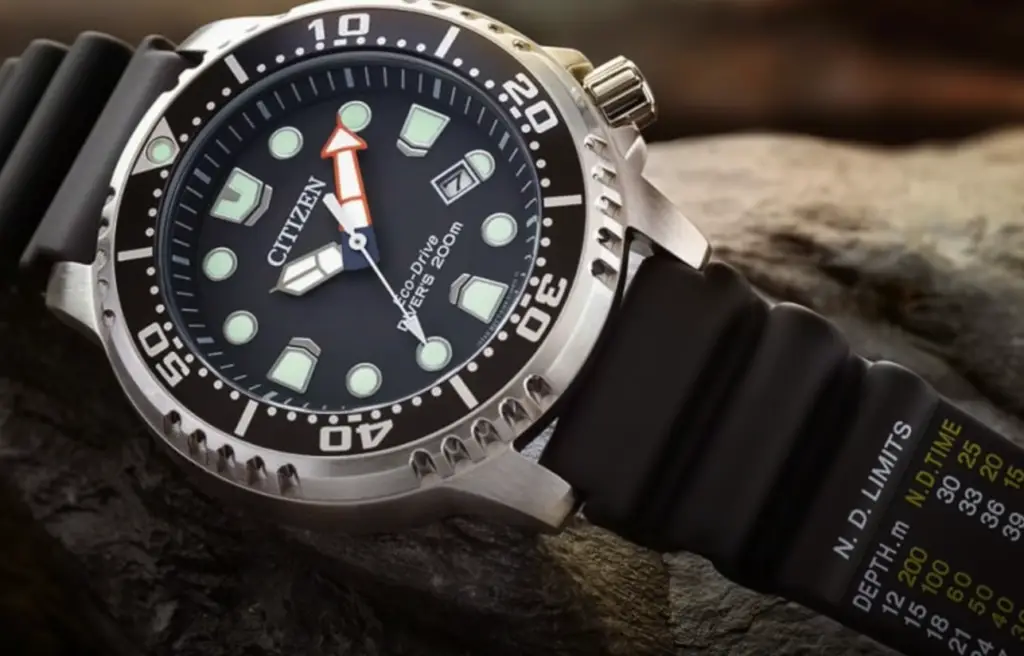
Diver’s watches are designed for recreational diving and meet all of the requirements set forth in ISO 6425. This standard is recognized internationally, so you can be confident that a watch with this designation will perform as advertised. [4]
Water Resistant vs. Waterproof: Standards of Regulation
The terms “w/resistant” and “w/proof” are often used interchangeably, but there is a big difference between the two. In order for a watch to be labeled as waterproof, it must meet certain standards set by international regulating organizations. These standards ensure that a watch can withstand being submerged in water at depths specified on the watch’s dial or case back for a period of time without suffering any damage.
On the other hand, watches that are merely water-resistant do not have to meet these same stringent standards. Water resistance is simply a measure of how well a watch can resist penetration by water under specific conditions such as when it is raining or when you are washing your hands.
FAQ
Which is better: waterproof or water-resistant watches?
The answer to this question is not as simple as it may seem. It depends on a variety of factors.
If you are someone who enjoys swimming, diving, or any other water-based activities on a regular basis, then a waterproof watch is likely the better option for you. Waterproof watches are designed to withstand depths of 100 meters or more, making them ideal for those who participate in water sports.
On the other hand, if you lead a more sedentary lifestyle and don’t often find yourself in contact with water, then a w/resistant may be all you need.
Ultimately, the decision of whether to choose a w/proof or w/resistant watch is a personal one. Consider your budget, your lifestyle, and the activities you typically engage in.
Are water-resistant watches waterproof?
No, water-resistant watches are not waterproof. W/proof watches are specially made to withstand being submerged in water for extended periods of time, whereas w/resistant watches are only resistant to a certain amount of water exposure. [5]
Is waterproof and water resistance the same thing?
W/proof watches are completely impervious to water, while w/resistant watches are only able to resist a certain amount of water pressure. Waterproof watches are usually much more expensive than their water-resistant counterparts.
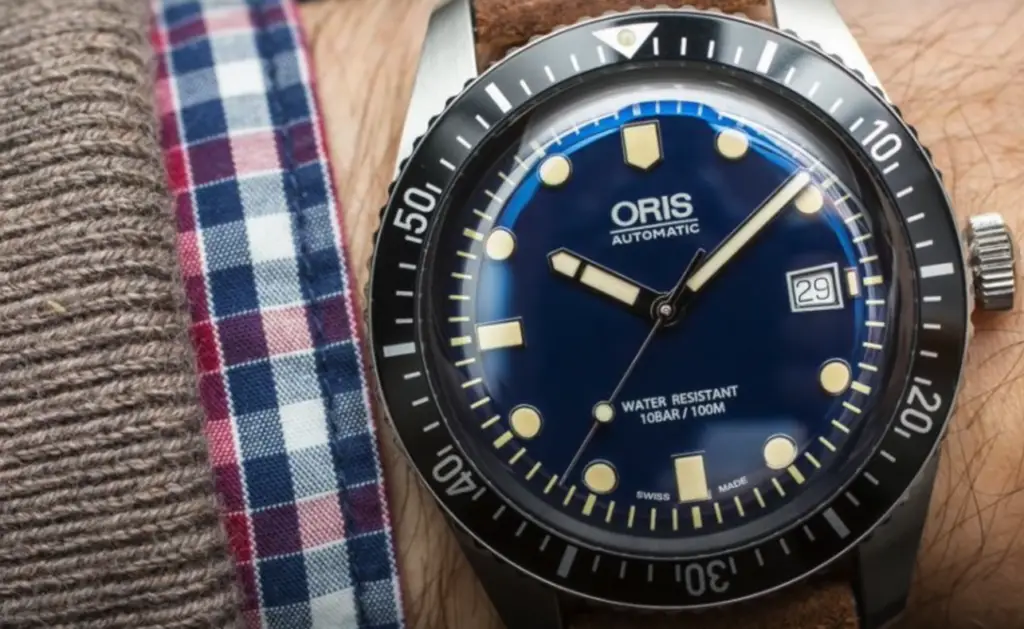
Can I swim with a water-resistant watch?
The quick answer is: it depends. If your watch is only w/resistant, then you probably shouldn’t go swimming with it. Water resistance is measured in ATM (atmospheres), and generally speaking, most w/resistant watches can withstand pressures of up to 30 ATM.
Anyway, this does not guarantee that your watch will survive if you go deeper than 30 meters. The pressure at depth increases exponentially the further down you go, so even a small increase in depth can put a lot of pressure on your watch. This is why we generally don’t recommend swimming with a w/resistant watch unless it specifically says that it’s safe to do so. [6]
If your watch is waterproof, on the other hand, then you can safely take it swimming. Waterproof watches are designed to withstand much higher pressures than w/resistant watches.
Useful Video: What You Should Know About Water Resistance in Watches
Conclusion
Waterproof watches are designed to be completely submerged in water and withstand high-pressure water activities. Water-resistant watches are meant to protect against splashes of water or rain, but they should not be worn while swimming.
When choosing a watch, it is important to consider the type of activities you will be using it for. If you plan on swimming or diving, a waterproof watch is a must. If you just want a watch that can handle a little bit of water, then a w/resistant watch will suffice.
References:
- https://wristwatchpro.com/water-resistant-vs-waterproof/
- https://www.bobswatches.com/rolex-blog/watch-101/waterproof-watches-vs-water-resistant-how-to-tell-the-difference.html
- https://hiconsumption.com/watch-water-resistance-rating-explained/
- https://www.definewatches.com.au/water-resistance/
- https://mondaine.com/blogs/news/waterproof-vs-water-resistant
- https://www.quora.com/Can-I-go-swimming-with-a-waterproof-watch

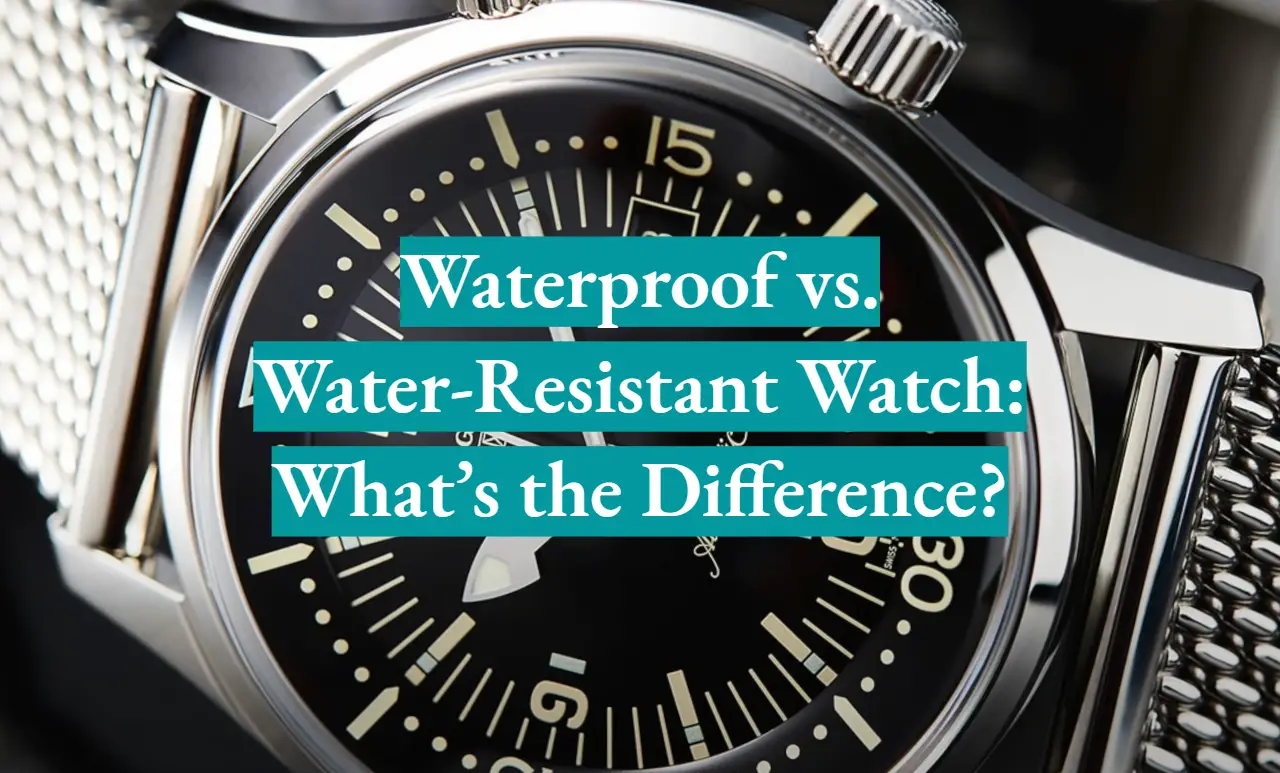

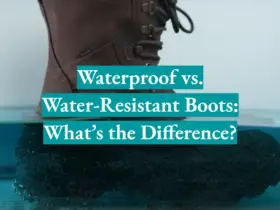


Leave a Reply